
Fort Oglethorpe is a city predominantly in Catoosa County with some portions in Walker County in the U.S. state of Georgia. As of the 2020 census, the city had a population of 10,423. It is part of the Chattanooga, TN–GA Metropolitan Statistical Area. It is home to Lakeview – Fort Oglethorpe High School.
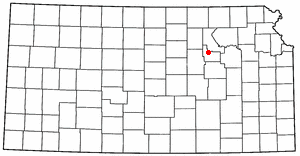
Fort Riley is a United States Army installation located in North Central Kansas, on the Kansas River, also known as the Kaw, between Junction City and Manhattan. The Fort Riley Military Reservation covers 101,733 acres (41,170 ha) in Geary and Riley counties. The portion of the fort that contains housing development is part of the Fort Riley census-designated place, with a residential population of 7,761 as of the 2010 census. The fort has a daytime population of nearly 25,000. The ZIP Code is 66442.

Buffalo Soldiers were United States Army regiments composed primarily of African Americans, formed during the 19th century to serve on the American frontier. On September 21, 1866, the 10th Cavalry Regiment was formed at Fort Leavenworth, Kansas. The nickname "Buffalo Soldiers" was purportedly given to the regiment by Native Americans who fought against them in the American Indian Wars, and the term eventually became synonymous with all of the African American U.S. Army regiments established in 1866, including the 9th Cavalry Regiment, 10th Cavalry Regiment, 24th Infantry Regiment, 25th Infantry Regiment and 38th Infantry Regiment.
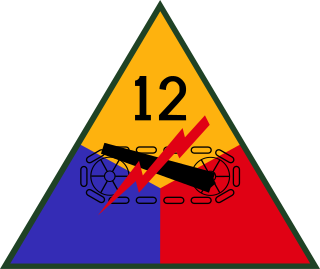
The 12th Armored Division was an armored division of the United States Army in World War II. It fought in the European Theater of Operations in France, Germany and Austria, between November 1944 and May 1945.

The Air Assault Badge is awarded by the U.S. Army for successful completion of the Air Assault School. The course includes three phases of instruction involving U.S. Army rotary wing aircraft: combat air assault operations; rigging and slingloading operations; and rappelling from a helicopter.

The 9th Infantry Division is an inactive infantry division of the United States Army. It was formed as the 9th Division during World War I, but never deployed overseas. In later years it was an important unit of the U.S. Army during World War II and the Vietnam War. It was also activated as a peacetime readiness unit from 1947 to 1962 at Fort Dix, New Jersey, and Fort Carson, Colorado, and from 1972 to 1991 as an active-duty infantry division at Fort Lewis, Washington. The division was inactivated in December 1991.

Fort Oglethorpe was a United States Army post in the US state of Georgia. It was established in a 1902 regulation, and received its first contingent in 1904. It served largely as a cavalry post for the 6th Cavalry. During World War I, Fort Oglethorpe housed 4,000 German prisoners of war and civilian detainees. During World War I and World War II, it served as an induction and processing center. During World War II, it was a major training center for the Women's Army Corps.
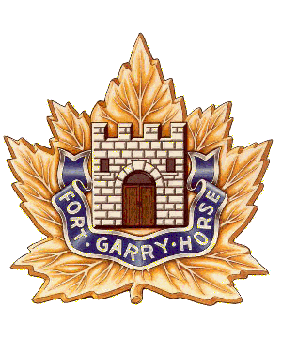
The Fort Garry Horse is a Canadian Army Reserve armoured regiment based in Winnipeg, Manitoba, Canada. It is part of 3rd Canadian Division's 38 Canadian Brigade Group. It traces its history to a cavalry regiment first formed in 1912 that first took up the name "Fort Garry" a year afterwards. Since that time the regiment has served in the First World War, sending men to battalions of the Canadian Expeditionary Force, and as an armoured regiment in the Second World War.
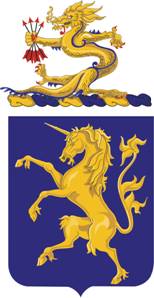
The 6th Cavalry is a regiment of the United States Army that began as a regiment of cavalry in the American Civil War. It currently is organized into aviation squadrons that are assigned to several different combat aviation brigades.

Jerry Wayne Wickam was a United States Army soldier and a recipient of the United States military's highest decoration—the Medal of Honor—for his actions in the Vietnam War.
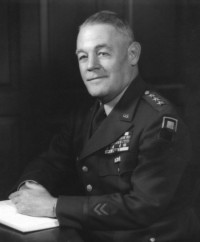
Thomas Wade Herren was a United States Army officer and combat commander whose career spanned from World War I to the post-Korean War era.

George Crawford Platt was an Irish American who served with the federal army of the United States during the American Civil War. A private with Troop H of the 6th U.S. Cavalry, he was awarded the Medal of Honor, America's highest award for valor in combat, for protecting the American flag in hand-to-hand combat near Fairfield, Pennsylvania, during the Battle of Gettysburg on July 3, 1863.
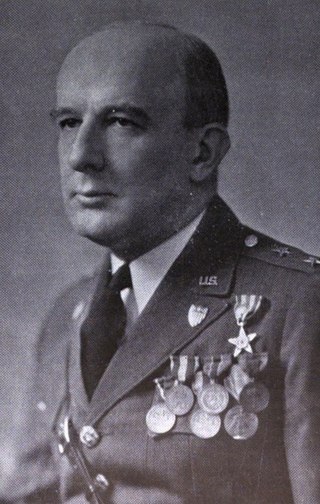
James Fuller McKinley was a career officer in the United States Army. He attained the rank of major general and served as Adjutant General of the United States Army from 1933 to 1935.
Lewis Stone "Bob" Sorley III is an American intelligence analyst and military historian. His books about the U.S. war in Vietnam, in which he served as an officer, have been highly influential in government circles.
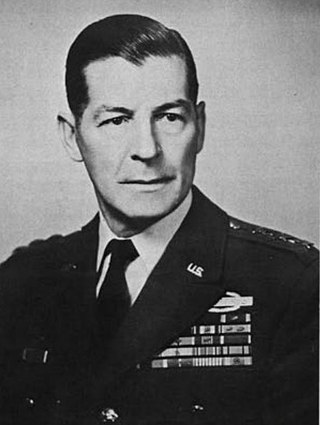
Gordon Byrom Rogers was a United States Army lieutenant general who served in several command positions during World War II and the Korean War, including the United States Military Advisory Group to the Republic of Korea and the 3rd Armored Division.

The 309th Cavalry Regiment was a cavalry unit of the United States Army during World War I and the interwar period. It was activated in early 1918 but broken up in the middle of the year to form new artillery units. The unit was recreated as a North Carolina Organized Reserve unit during the interwar period, and later moved to Georgia in the early 1930s. It was converted into a signal aircraft warning regiment after the United States entered World War II.
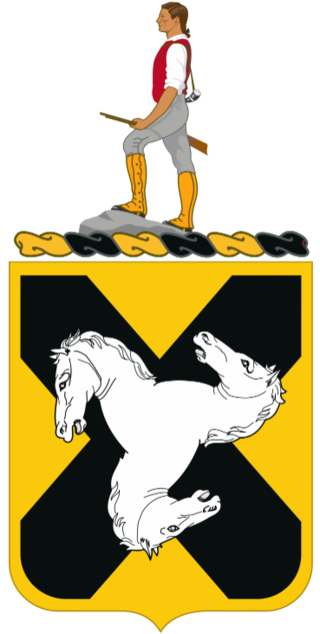
The 310th Cavalry Regiment was a cavalry unit of the United States Army during World War I and the interwar period. It was activated in early 1918 but broken up later that year to form new artillery units. The unit was recreated as a Tennessee Organized Reserve unit during the interwar period, and later moved to Georgia in the early 1930s. It was disbanded after the United States entered World War II.
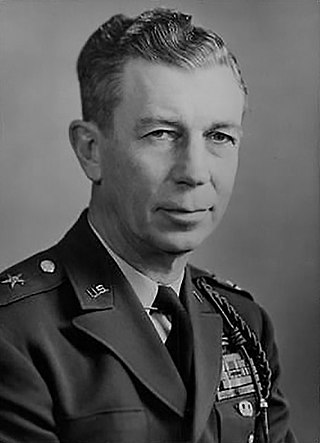
John Gibson Van Houten (1904-1974) served as a major general in the United States Army and was an important figure in the rebirth of the United States Army Rangers during the Korean War. He was a commanding officer of the 60th Infantry Regiment and Chief of staff of the 9th Infantry Division in World War II. At the start of the Korean War, he was picked by J. Lawton Collins to create an Airborne Ranger Training Program at Fort Benning in Georgia. Towards the end of his career he served as commander of the 8th Infantry Division and as Commander of the United States Army Military District of Washington.

The 6th Cavalry Brigade was a tactical formation of the United States Army which served in the Second World War before being disbanded following the end of the Cold War.

Richard Henry Rush was an American military officer who served in the United States Army during the Mexican-American War and the Union Army during the American Civil War. He mustered and served as colonel in the 6th Pennsylvania Cavalry Regiment from October 1861 to September 1862.



















